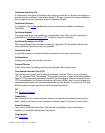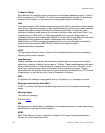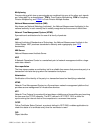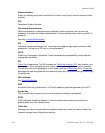
S100 User Guide – Rev. D – June 2005 131
2
5
3
Public Key Certificate
Certificate in the form of data that holds a public key, authentication information, and private
key information.
RA
A Registration Authority (RA) does not issue certificates, but does the required identification
for certain certificate data.
Resolution
Resolution of a time code refers to the smallest increment of time, whether it is days, hours,
seconds, or other.
Revocation
The withdrawing of a certificate by a Certificate Authority before its expiration date or time.
Also see Certificate Revocation List (CRL)
Risk Management
The tasks and plans that help avoid security risk, and if security is breached, helps minimize
damage.
Root CA
A Certificate Authority (CA)
whose certificate is self-signed; that is, the issuer and the subject
are the same. A root CA is at the top of a hierarchy.
Root Time Trust Authority (RTTA)
Also called Root Time Trust Services, these are end user organizations who provide time
calibration and auditing services. Examples include Seiko Instruments, Inc., and Sovereign
Time.
RSA
The RSA (Rivest-Shamir-Andleman) algorithm is a public-key encryption technology
developed by RSA Data Security.
SHA-1
Secure Hash Algorithm is an algorithm developed by the US National Institute of Standards
and Technology (NIST
). SHA-1 is used to create a cryptographic hash of a message or data.
It has a larger message digest, so it is considered to be somewhat stronger than MD5.
Smart card
A card the size of a credit card, which holds a microprocessor that stores information.
S/MIME
Secure Multipurpose Internet Mail Extensions. The standard for secure messaging.


















